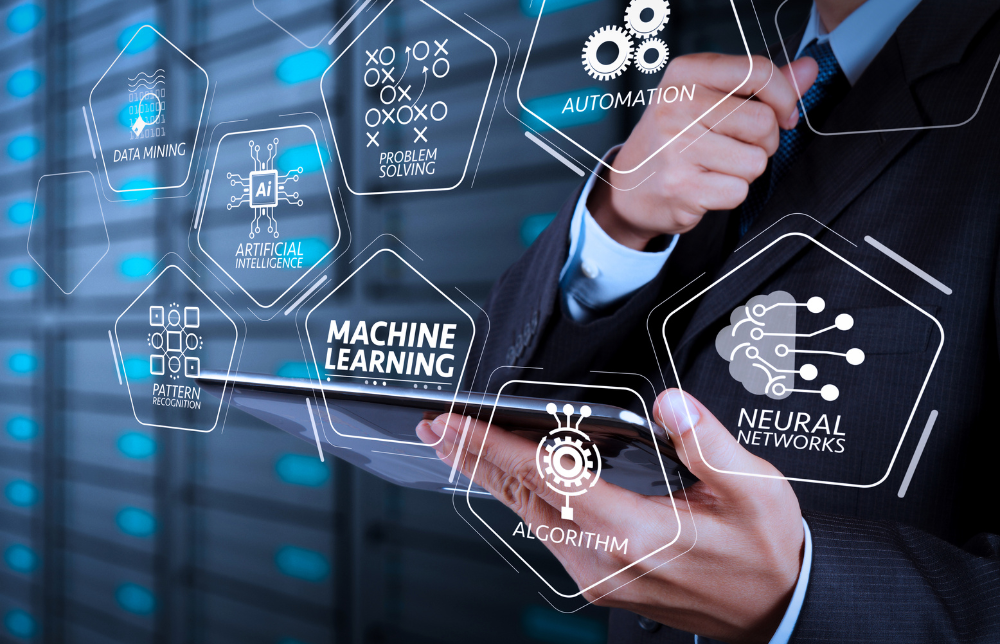How Technology Can Help You Overcome Hybrid Work Challenges
The rapid shift to remote working in March 2020 was a step into the unknown for many organisations. Two years on, the initial fears associated with this shift have thankfully ...

The rapid shift to remote working in March 2020 was a step into the unknown for many organisations. Two years on, the initial fears associated with this shift have thankfully dissipated. For example, the fear that employee productivity might suffer, that performance standards would drop, and that existing communications channels would not be up to the task, have – for the most part – eased.
However, with 100% remote work giving way to hybrid work, there are fresh challenges that will need to be addressed to ensure the needs of employees continue to be met – without compromising organisational performance or breaking already overstretched HR resources.
What are the challenges associated with hybrid work?
A McKinsey survey[1]of top C-suite executives revealed that talent, hiring, processes, management, connections and productivity all need a rethink to align with a hybrid future. 50% of these executives believe that more than half of the work their organisations do can be shifted to a remote setup.
However, there are concerns about maintaining company culture, onboarding new employees, and sustaining innovation and ideas generation when employees are geographically dispersed.
Below we’ve drilled down deeper into three key challenges that HR and leadership teams will likely face and outlined how technology can help to overcome these challenges.
Challenge #1: The coordination and planning required to ensure teams continue to collaborate and work productively together is overwhelming
The coordination of resources, of physical space, of who’s doing what, where and when, has suddenly become a whole lot more complicated. Pre-pandemic, it was easy to know where everyone was. Gone are the days of messy, constantly updated spreadsheets! Now, we need a better way to track who’s in the office and who’s remote. All collaborative work involves coordination but working in hybrid teams presents significantly more coordination challenges than working face-to-face.
Although a hybrid work model will require employees to be physically in the workplace part-time, the workplace should be somewhere employees want to spend their time. It should be a space that facilitates productivity and collaborative behaviour, unlocks inspiration and innovation, and enables socialization and culture-building.
Another way to strengthen culture within a hybrid environment is to have set ‘in-office’ days for all team members – perhaps once or twice a week. This way, when employees are in the office they can bond with their team in-person and forge stronger connections.
Ultimately, employers should endeavour to make the physical workplace as purposeful as possible – a place employees can go to fulfil their needs and do their jobs effectively.
How tech can help
ELMO Hybrid Work provides organisations with the ability to define and implement their hybrid work policy, including establishing rules / guidelines for office days, a noticeboard for communication of policy updates and the ability to establish daily capacity limits. This enables organisations to manage their available capacity in a hybrid-work model as well as meet COVID-19 health & safety requirements as they transition back to the office. Importantly, this takes the guess-work out of capacity planning as validation rules prevent overbooking.
A core component of ELMO Hybrid Work is the calendar view, where employees can easily see what capacity is available by location / work area as well as which days their peers are scheduled to attend the office. Employees can also define preferences (daily work / office days) and apply in bulk to streamline the scheduling process. ELMO Hybrid Work also provides administrators with powerful dashboards to identify who’s in the office, available capacity by location, popular days and other key metrics to assist capacity management and planning.
Challenge #2: The employee experience is now about the “whole person” – but how can this be addressed from afar?
Since COVID-19, employees’ personal circumstances have been of greater concern to employers, mainly due to the increased blurring of ‘work’ and ‘home’. If individuals cannot bring their “whole selves” to their work environment – wherever that happens to be – it will likely result in lower levels of engagement productivity, and overall happiness.
Research from Gartner found that 82% of employees want their employer to view them as people, not just employees.[2] In response, many organisations have stepped up their efforts to create a greater sense of inclusiveness and belonging – the feeling from employees that their employer cares about their overall happiness and understands that everyone has a unique background and is coping with unique circumstances, etc.
Why does belonging matter?
A 2019 study[3] found that workplace belonging can lead to an estimated:
- 56% increase in job performance
- 50% reduction in turnover risk
- 75% decrease in employee sick days
A rising tide is sweeping workplaces – employees are craving employers who actively invest in their holistic well-being. From information sessions and webinars on financial health (for example, retirement savings, working through student debts, etc.) through to supporting physical wellbeing with healthy eating sessions, gym memberships and group fitness sessions, and onto employee assistance programs (EAPs) to support mental health, employers are getting more creative with their wellness benefits.
Read more about how organisations can create cultures that prioritise employee wellness in our eBook.
How tech can help
ELMO Wellbeing provides employees with confidential, professional, short-term, solution-focused counselling via Acacia Connection’s EAP. This service is available 24 hours a day, 365 days a year. ELMO’s partnership with Acacia Connection provides employees with access to a team of over 1,300 experienced clinicians that deliver services face-to-face, over the phone, via video conference, or through live chat. ELMO Wellbeing leverages the wider ELMO Software suite to improve access to important mental health and wellbeing information (including the Acacia Connection EAP service) via the ELMO dashboard
ELMO Wellbeing also provides administrators with anonymised reports of key insights related to the Acacia Connection EAP service, including the number of employees reaching out for support, the nature of their presenting issues, the service delivery platform used, and industry benchmarking.
Challenge #3: Employee journeys become generic and ‘one-size-fits-all
Any HR leader or line manager who recruited and onboarded new employees during COVID-19 knows how difficult it can be to build genuine rapport when people are not physically in the same workspace. Retention starts now, with personalization as the challenge.
Personalisation is transforming how HR delivers its services and impacting how employees engage with everything an organisation has to offer. Such an approach will take into account past history and current circumstances (i.e. current role) and potentially make suggestions and recommendations for the future. This is similar to consumer retail and entertainment platforms like Amazon or Netflix, which provide nudges and suggestions based on previous consumer choices.
Switching to personalisation in the workplace, a learning path should be customisable to the employee’s role. It should also take into account the learner’s past and configure the way forward accordingly, perhaps even making suggested content recommendations that are most relevant to them. Alternatively, an employee who is returning from parental leave might not need to undertake all steps in the onboarding process, but might still benefit from a more customised, focused onboarding experience that factors in their previous experience and knowledge, but adds fresh elements so they feel confident stepping back into the workforce.
How tech can help
ELMO Experiences enables employers to prioritise the ‘moments that matter’ throughout the employee lifecycle – such as onboarding, office relocations, promotions, return to the office from remote working, or returning from extended leave – using an easy-to-use journey builder. This provides employees with relevant and timely content that keeps them informed and helps them navigate change. HR automation takes flight with journey templates. Forget manual tasks – let events and time cues trigger actions automatically, freeing up your team. The end result is a memorable, highly personalised experience for employees during key stages of the employment journey.
Final word
Technology can play an integral role in the transition to a hybrid work model and has the potential to help organisations experiment with different operational models to achieve greater efficiency at reduced operating costs. However, it cannot mask outdated or ineffective people processes. It’s time to give HR processes a makeover for today’s work landscape. From there, HR can assess how technology can help facilitate hybrid work while also saving HR from manual tasks, building more resilient team bonds, strengthening company culture, and improving the employee experience.
ELMO Software is a cloud-based solution that helps thousands of organisations across Australia, New Zealand and the United Kingdom to effectively manage their people, process and pay. ELMO solutions span the entire employee lifecycle from ‘hire to retire’. They can be used together or stand-alone, and are configurable according to an organisation’s unique processes and workflows. Automate and streamline your operations to reduce costs, increase efficiency and bolster productivity. For further information, contact us.
[1] “What executives are saying about the future of hybrid work”, McKinsey, 2021
 HR Core
HR Core 









